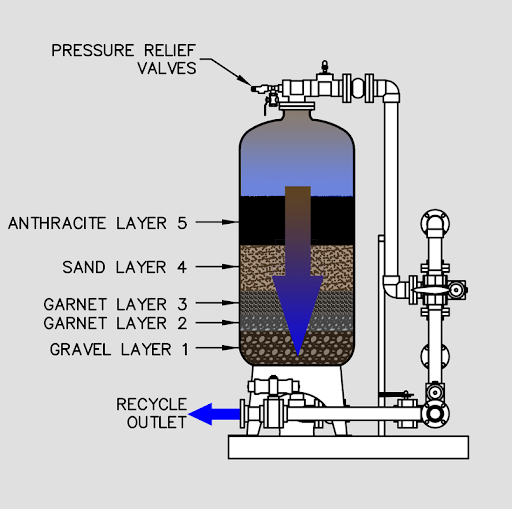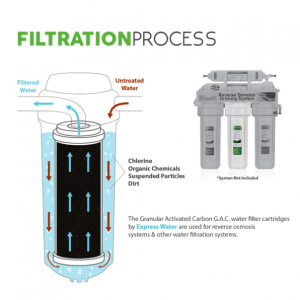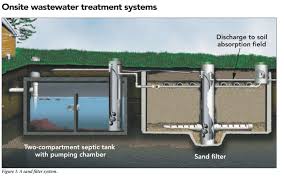A multi media filter is used to reduce the level of suspended solids (turbidity) in process water. Suspended solids can consist of small particles such as silt, clay, grit, organic matter, larvae, zooplankton, algae and other microorganisms. The filtration degree of a multi-media filter depends heavily on the filter media and flow (velocity) through the filter.
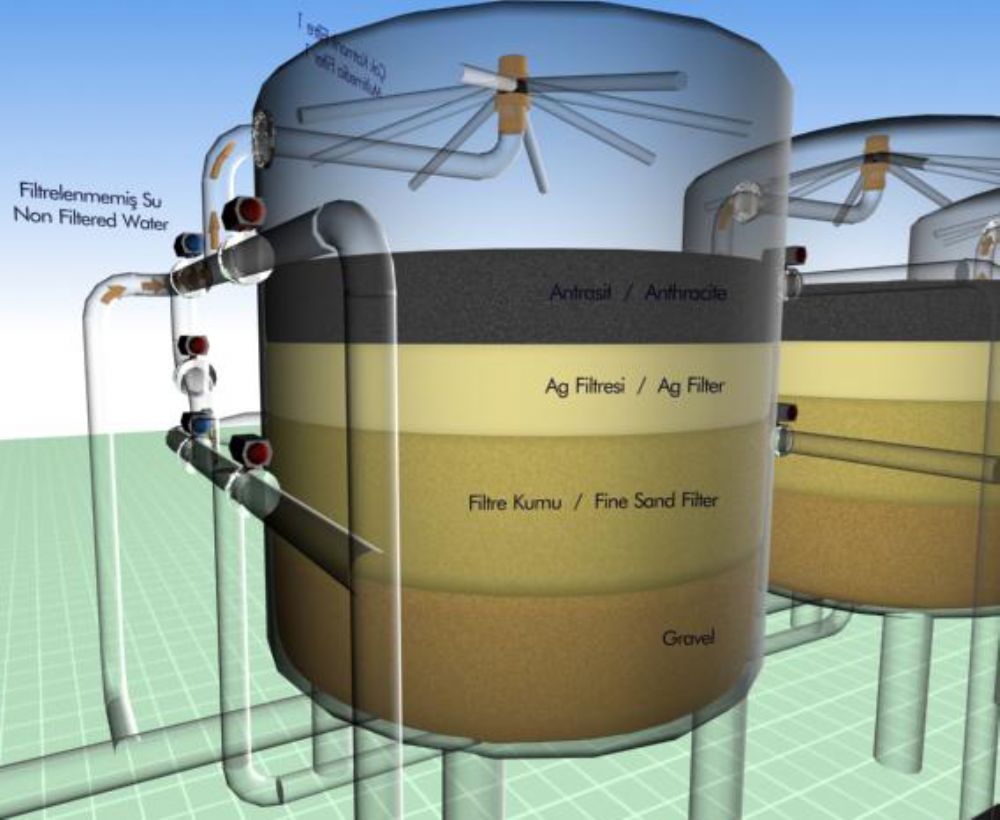
A typical multi media filter setup contains three layers of filling. Those are anthracite, sand and gravel.
- The anthracite traps the courser dirt particles to prevent the formation of a layer cake on top of the filter bed.
- The smaller particles get trapped in the sand layer. With a low fluid velocity particles will adhere to the sand with a cohesive bonding.
- The gravel allows the water to flow evenly to the mushroom diffusors and out of the filter media.
This filter package allows the entire filter bed to function longer between backwash. A well operated filter removes particles down to 15-20 microns. With use of a coagulant addition it can filter particles down to 5-10 microns.
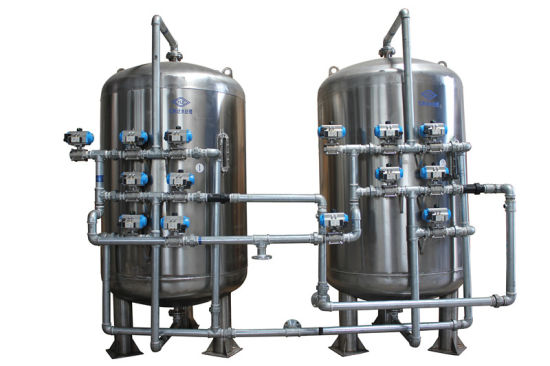
Over time the pressure drop over the filter rises while the flow remains the same, due to the adhered suspended solids. Eventually the filter media needs to be cleaned, a process called backwashing.
A backwash should be performed when the differential pressure exceeds 0,1-0,2 bar over the differential pressure of a clean filter. A backwash should be performed at least once a week to prevent clumping of the media. With a setup of valves the flow direction over the filter reverses. At a velocity of 35m/h (depending on the type of media) the filter bed expands. The particles detaches of the filter media grains due to the raised velocity. The expanded gaps between the grains make sure it can exit the vessel. When the velocity exceeds the maximum design specifications the filter bed expands to much which will result in losing media out of the top during backwash.
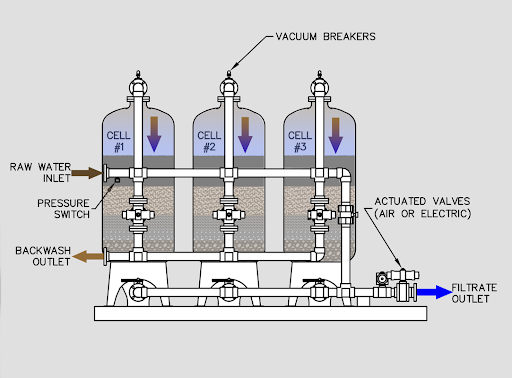
As source for backwashing the filter the filtered water of another (media) filter or raw water which normally enters the filter at the top. With the use of raw water a small amount of raw water entering the system downstream should be taken into account.
Another use of multi-media filters is the use as vessel for soluble materials. Some water processes alter the pH value or other key values in an undesirable way. By filling the vessel with a slowly soluble granular material the key characteristics of the water can be restored.
